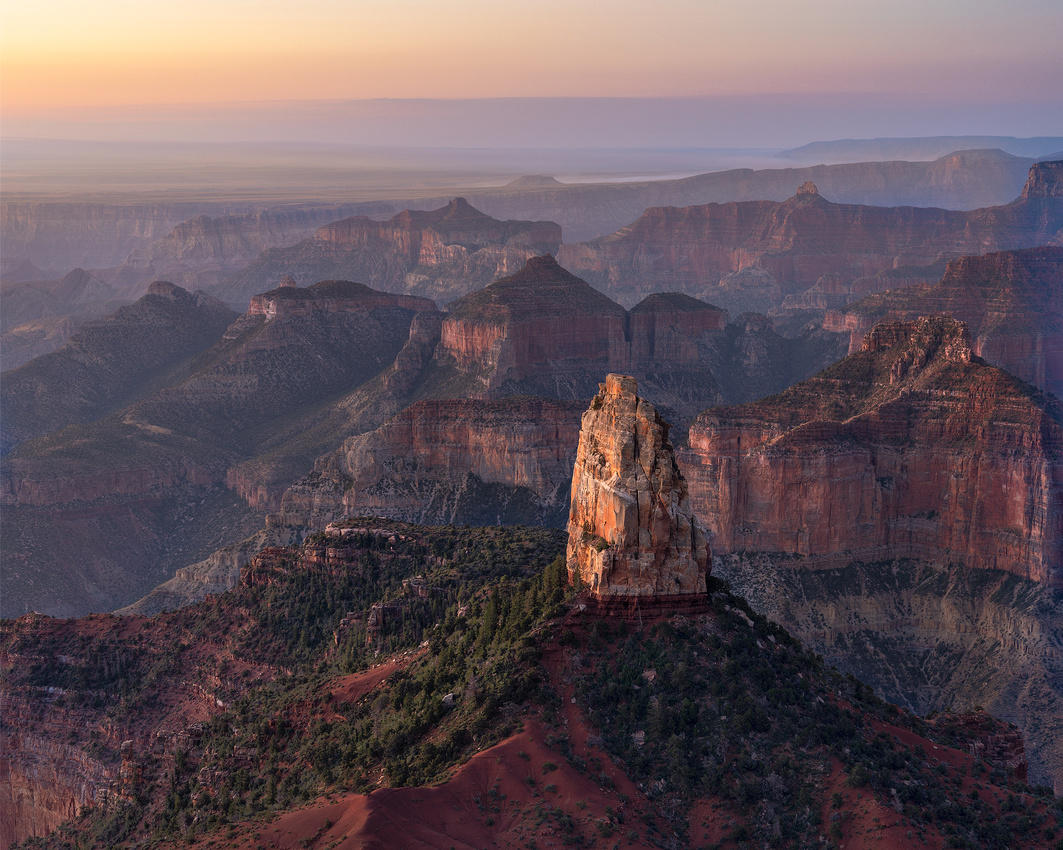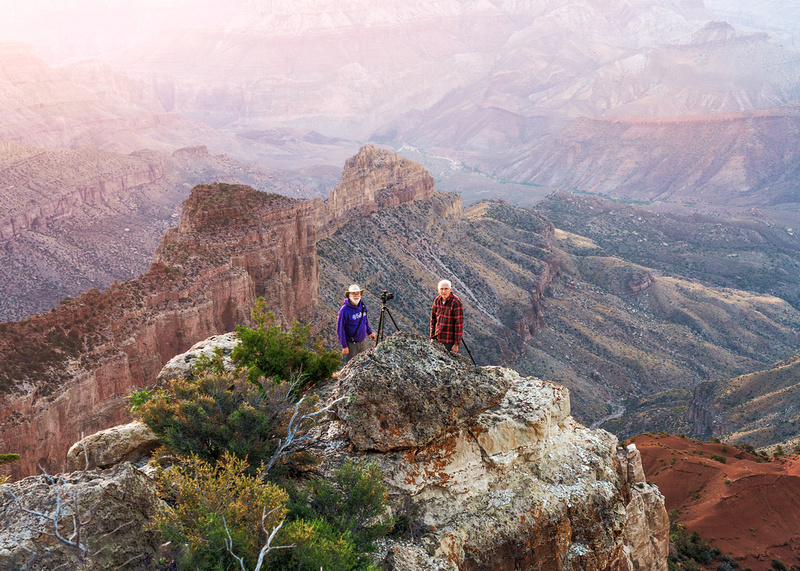The Quiet Side


Have you been to the Grand Canyon? Given its popularity, I’m guessing that most Friday Photo followers have visited the Park. Last year, it was ranked as the third most-visited National Park, behind Great Smoky Mountains National Park and Zion National Park.
The South Rim attracts almost all the visitors coming to view the Grand Canyon’s display of 1.8 billion years of geology. Fewer than 2 percent of the Park’s nearly 5 million visitors a year drive the additional five hours and 212 miles to the North Rim.
The North Rim (“the quiet side”) of the Grand Canyon is a wholly separate experience. It is a more remote, rugged and individual opportunity to see what John Wesley Powell (geologist, U.S. Army soldier, explorer of the American West, and second director of the U.S. Geologic Survey) described as “ledges and cliffs where the soaring eagle is lost to view before it reaches a summit.”
The North Rim, unlike the South Rim, allows you to see all the way down the mile-long slit in the earth to where the Colorado River runs. One thousand feet higher, the North Rim offers the three best comprehensive views of the Canyon: Toroweap, Point Sublime, and Cape Royal. Point Imperial is another impressive viewpoint.
Point Imperial
This is the highest point on the entire rim of the Grand Canyon. At an elevation of 8,803 feet, it’s the northernmost boundary of the Park.
From Point Imperial, visitors have breathtaking views of the Painted Desert and the eastern end of Grand Canyon. This is the area where the canyon transforms from the narrow gash of Marble Canyon to the more open and dramatic "grand" canyon. Layers of red and black Precambrian rocks add contrast and color.
Mount Hayden is the dominant structure visible from the Point. This 8,362-foot summit is one-half mile to the Southeast. It towers 5,000 feet above the bottom of Nankoweap Canyon.
It’s named for Charles T. Hayden (1825–1900), an Arizona pioneer influential in the development of the Arizona Territory. He is known as the "Father of Tempe,” and established Arizona State University.
The summit is composed of cream-colored, cliff-forming, Permian Coconino Sandstone caprock. This sandstone is the third youngest of the strata in the Grand Canyon, deposited a mere 265 million years ago as sand dunes. Below this lies reddish, slope-forming Permian Hermit Formation, which in turn overlays the Pennsylvanian-Permian Supai Group.
I’m not sure the height is conveyed by my photo. For scale, here’s an image of two climbers atop Mount Hayden from John Boyd shot this photo of us on the summit of Mount Hayden


The Shot
I was at the North Rim in August of 2023 with Steve Horne, Allan Fischer, and John Tarsha, all members of Naperville’s Photogenesis Camera Club. Our objective that morning was a Point Imperial sunrise image.
We were alone that morning. Steve and I climbed over the railing for a better view on a ledge below. Allan and John opted for a more secure perch on the viewing platform. Just as the sun was illuminating Mount Hayden with the multiple atmospheric layers in the background, I knew I had my image.
Afterwards, it was back to the North Rim Lodge for coffee and a hot breakfast.


Steve Horne and me after sunrise, courtesy of Allan Fischer
Wish me luck; I’m in the field chasing storms over the next two weeks. The next Friday Photo will be June 20.
Thanks for looking,
Chuck Derus